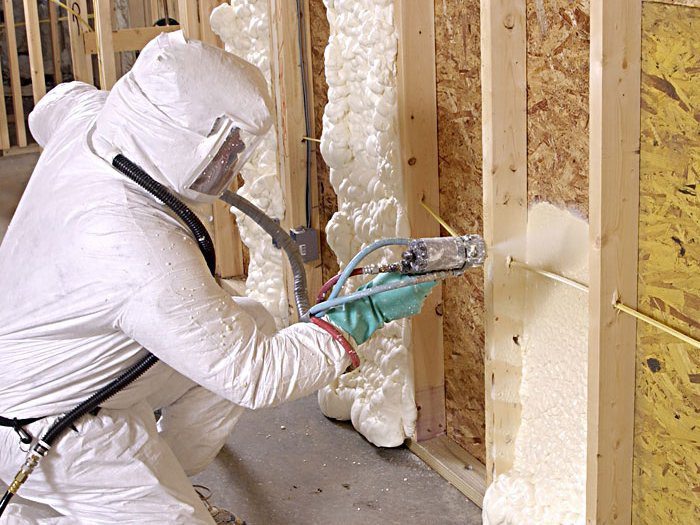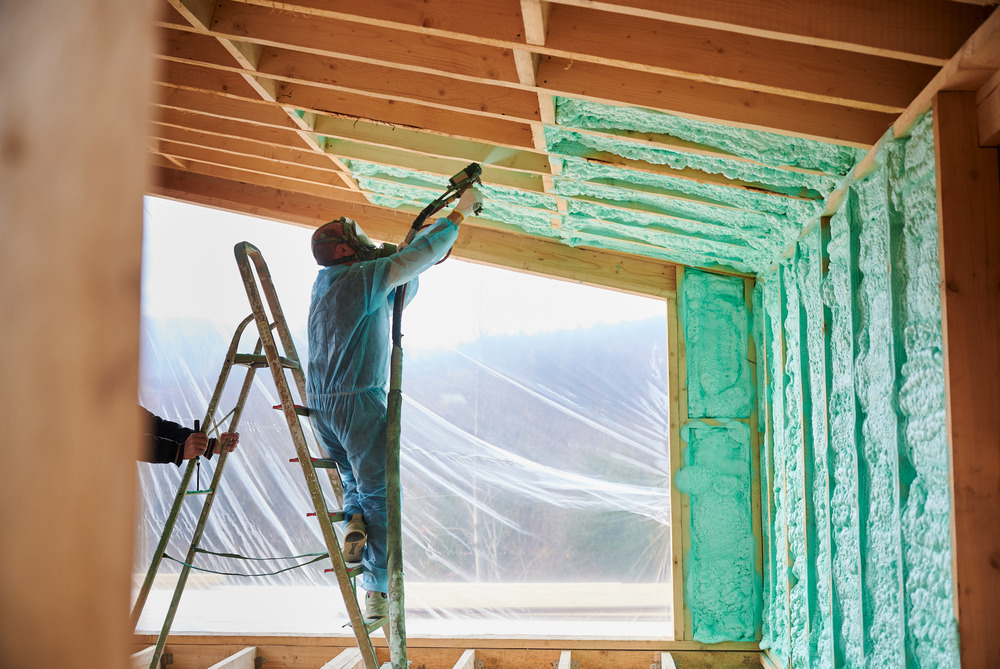Spray Foam: The Ultimate Option for Air Sealing and Insulation
Spray foam insulation has emerged as a leading option for reliable air sealing and thermal insulation, providing a special mix of homes that establish it in addition to traditional techniques. Its capability to increase and load gaps makes it especially efficient in protecting against air leak, which can significantly impact energy effectiveness. Comprehending the complete range of its benefits, setup processes, and comparisons with other insulation kinds is crucial for making informed choices. As we discover these facets, the effects for both brand-new buildings and retrofits end up being progressively significant. What elements should influence your selection?
What Is Spray Foam?
Spray foam is a versatile insulation product that integrates the principles of air securing and thermal resistance to enhance power effectiveness in buildings. Made up mostly of polyurethane or other comparable compounds, spray foam is used as a liquid that expands upon call with surfaces, developing a solid, continual layer of insulation. This special residential property enables it to load spaces, splits, and spaces that traditional insulation products may ignore, providing a premium air seal.
There are two major sorts of spray foam: open-cell and closed-cell. Open-cell spray foam is lighter and extra flexible, supplying outstanding sound absorption and a reduced R-value per inch - Spray Foam. On the other hand, closed-cell spray foam is denser, supplying a higher R-value, wetness resistance, and included structural honesty to building elements
The application procedure usually entails specialized devices, ensuring a seamless application that complies with various substrates, consisting of wood, concrete, and steel. This versatility makes spray foam ideal for both new buildings and retrofitting existing frameworks. Its capacity to create a closed obstacle dramatically contributes to decreasing power intake and boosting indoor air quality, thus making it a recommended selection amongst contractors and house owners alike.
Benefits of Spray Foam Insulation
One of the most significant benefits of spray foam insulation is its extraordinary capability to produce a constant air obstacle, which successfully lessens power loss. Unlike typical insulation products, spray foam increases to load voids and splits, making sure that air leakage is substantially lowered. This particular not just improves energy efficiency but additionally brings about decrease energy bills over time.
Additionally, spray foam insulation provides premium thermal resistance, adding to a much more steady indoor environment. Its high R-value per inch enables efficient insulation in restricted spaces, making it perfect for attics, wall surfaces, and crawl areas. The moisture-resistant buildings of spray foam assistance prevent mold and mildew and mold development, advertising healthier living problems.
Another vital benefit of spray foam insulation is its sound-dampening top qualities (Spray Foam). It successfully decreases sound transmission between areas, producing a quieter and more comfortable home environment. The longevity of spray foam also attracts attention, as it does not sag or resolve gradually, maintaining its performance throughout its life-span
How Spray Foam Functions
Understanding exactly how spray foam insulation functions is vital for valuing its effectiveness in read this article air securing and thermal resistance. Spray foam insulation contains two main parts: isocyanate and polyol resin. When these elements are combined, they undergo a chain reaction that creates the material to broaden swiftly, creating a dense foam that fills up tooth cavities, fractures, and voids.
As the foam increases, it abides by surfaces, developing a closed seal that dramatically reduces air infiltration. This characteristic makes spray foam insulation extremely efficient at stopping drafts and dampness infiltration, which can bring about energy loss and damage over time. Additionally, the closed-cell variant of spray foam provides remarkable thermal resistance because of its stiff framework, successfully lessening warmth transfer.
The one-of-a-kind site here properties of spray foam allow it to adapt irregular surface areas, making certain thorough insurance coverage and a smooth obstacle. As a result, spray foam insulation not only enhances energy performance yet additionally adds to improved indoor air quality by lowering the buildup of irritants and contaminants. Inevitably, recognizing the auto mechanics behind spray foam underscores its role as a premium selection for insulation and air sealing in both business and property applications.
Installment Process Overview

Prior to installation, the area has to be properly cleaned up and prepped, making certain that surfaces are without particles, dampness, and dirt. This action is critical because contaminants can jeopardize bond and general efficiency. Once the area is prepared, the application involves mixing both components of the spray foam, which expands upon contact and fills gaps efficiently.
Trained professionals ought to conduct the installation, utilizing specialized equipment to ensure consistent insurance coverage and optimum thickness. Security safety measures, including wearing safety equipment and ensuring proper air flow, are essential throughout this procedure. After application, the foam normally remedies rapidly, forming a strong obstacle that enhances power performance.
Contrasting Spray Foam to Conventional Insulation
When assessing insulation alternatives, spray foam insulation stands out in comparison to typical materials such as fiberglass and cellulose. Unlike fiberglass and cellulose, which can permit air infiltration, spray foam increases upon application, filling up holes and spaces to produce an impermeable seal.
Additionally, spray foam offers a greater R-value per inch than typical insulation kinds, offering even more effective thermal resistance in a thinner profile. This particular is particularly valuable in areas with minimal cavity depth. Spray foam is immune to dampness and mold growth, which can be a considerable problem with cellulose and fiberglass, particularly in damp atmospheres.
Nonetheless, spray foam insulation generally brings a greater ahead of time cost than its conventional counterparts. Home owners have to weigh this initial investment versus long-lasting power financial savings and efficiency benefits. Ultimately, while both insulation types serve their function, spray foam emerges as a much more sophisticated option for modern-day insulation demands, specifically in regards to air securing and thermal performance.

Final Thought
In summary, spray foam insulation represents a highly reliable remedy for attaining optimum air sealing and thermal resistance. Its distinct homes, including moisture resistance and audio dampening, make it ideal for different applications in both new constructions and retrofitting projects (Spray Foam). Although the first prices may be higher contrasted to standard insulation materials, the long-term advantages, such as considerable energy financial savings and enhanced indoor air top quality, validate the investment and emphasize its worth in modern structure methods.
Spray foam insulation has actually emerged as a leading remedy for efficient air securing and thermal insulation, providing an one-of-a-kind combination of properties that establish it apart from traditional techniques.Spray foam is a versatile insulation material that incorporates the principles of air securing and thermal resistance to boost energy efficiency in structures.When reviewing insulation choices, spray foam insulation stands out in contrast to conventional products such as fiberglass and cellulose. Inevitably, while both insulation types offer their objective, spray foam emerges as a much more innovative solution for contemporary insulation demands, particularly in terms of air securing and thermal efficiency.
In summary, spray foam insulation stands for a very effective service for attaining optimum air sealing and thermal resistance.
Comments on “Top Applications of Spray Foam for Residential and Commercial Properties”